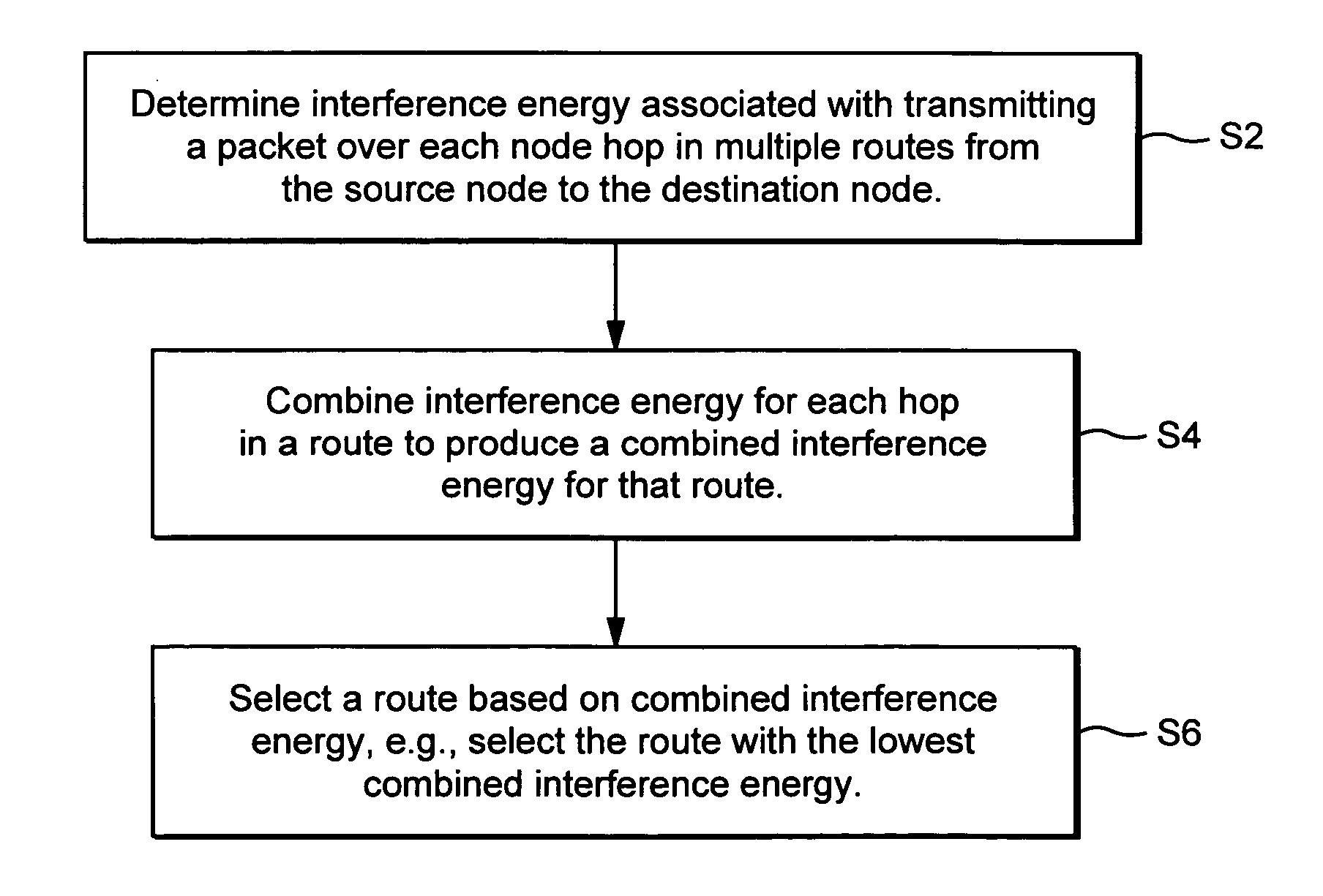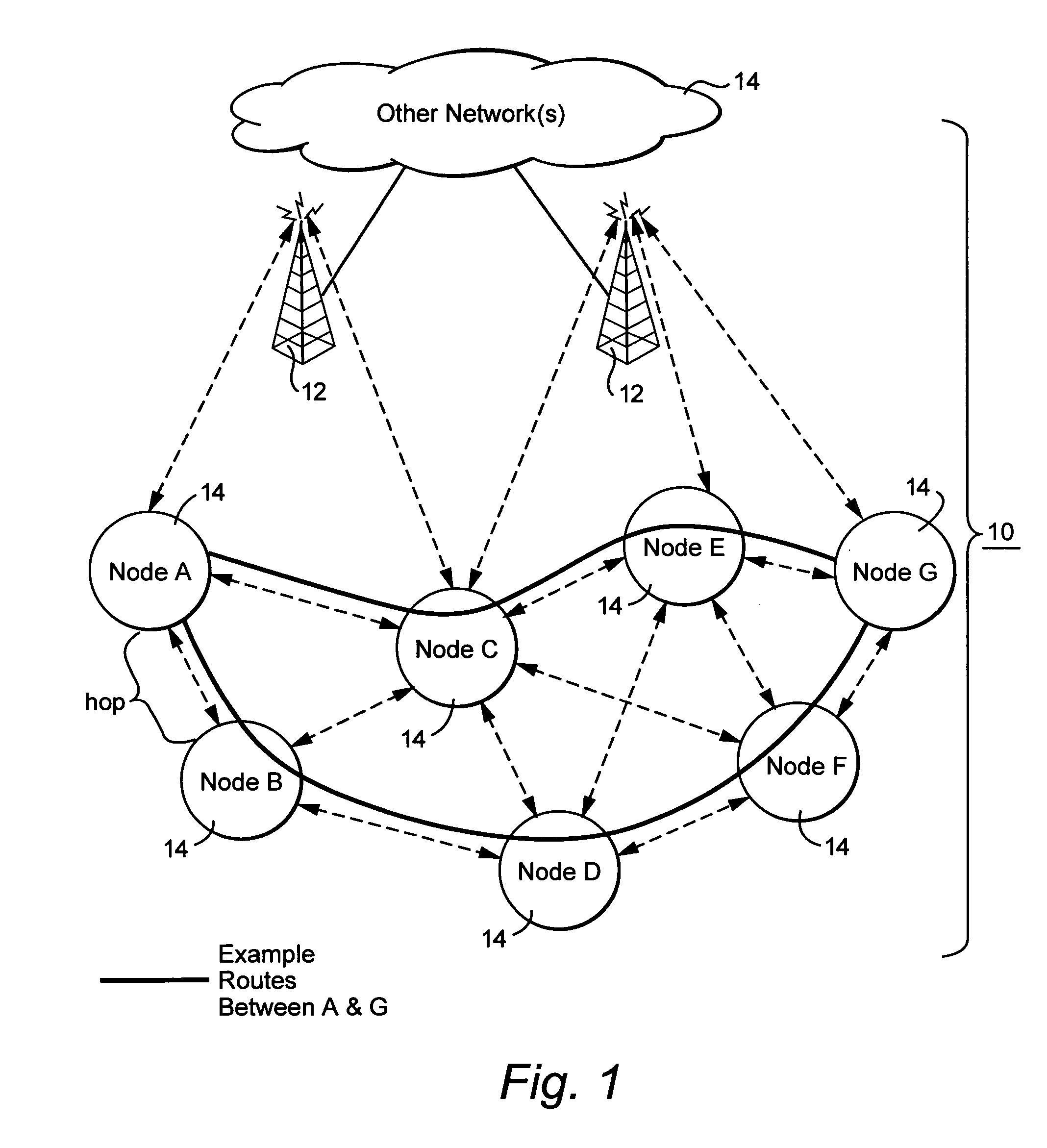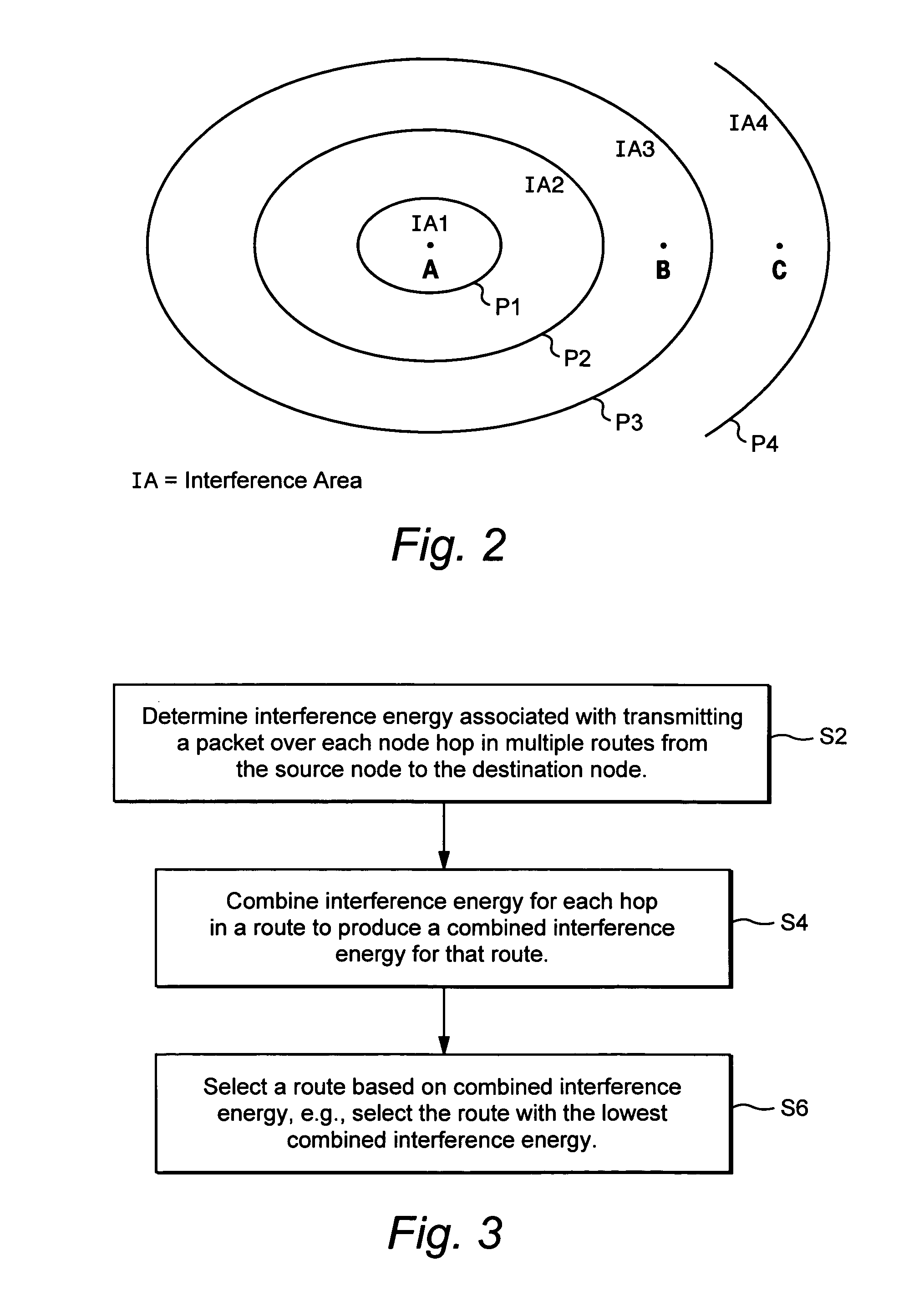Interference-based routing in a wireless mesh network
a wireless mesh network and interference-based technology, applied in the field of wireless communication, can solve the problems of high error rate, long time to transmit packets, power/interference limitations, etc., and achieve the lowest cumulative “cost” and low data rate. , the effect of high error ra
- Summary
- Abstract
- Description
- Claims
- Application Information
AI Technical Summary
Benefits of technology
Problems solved by technology
Method used
Image
Examples
Embodiment Construction
[0023] In the following description, for purposes of explanation and not limitation, specific details are set forth, such as particular components, electronic circuitry, techniques, protocols, standards, etc. in order to provide an understanding of the described technology. For example, one advantageous application is to wireless local area networks that follow the IEEE 802.11 standard. But other standards and other types of network are also applicable, e.g., Bluetooth PANs. Further, it will be apparent to one skilled in the art that other embodiments may be practiced apart from the specific details. In other instances, detailed descriptions of well-known methods, devices, techniques, etc. are omitted so as not to obscure the description with unnecessary detail. Individual function blocks are shown in the figures. Those skilled in the art will appreciate that the functions of those blocks may be implemented using individual hardware circuits, using software programs and data in conj...
PUM
 Login to View More
Login to View More Abstract
Description
Claims
Application Information
 Login to View More
Login to View More - R&D
- Intellectual Property
- Life Sciences
- Materials
- Tech Scout
- Unparalleled Data Quality
- Higher Quality Content
- 60% Fewer Hallucinations
Browse by: Latest US Patents, China's latest patents, Technical Efficacy Thesaurus, Application Domain, Technology Topic, Popular Technical Reports.
© 2025 PatSnap. All rights reserved.Legal|Privacy policy|Modern Slavery Act Transparency Statement|Sitemap|About US| Contact US: help@patsnap.com



